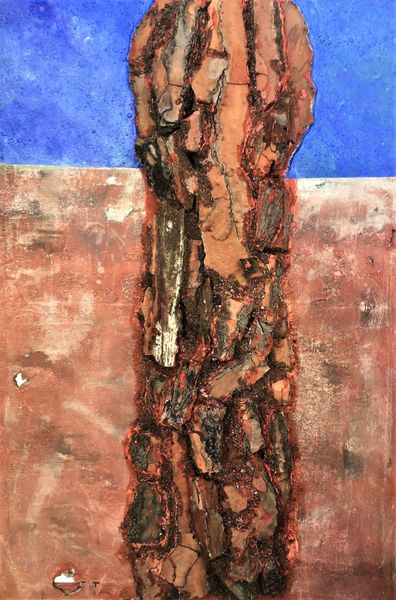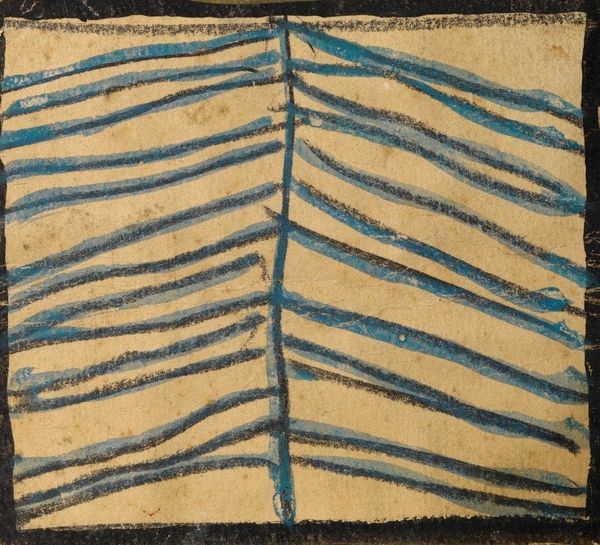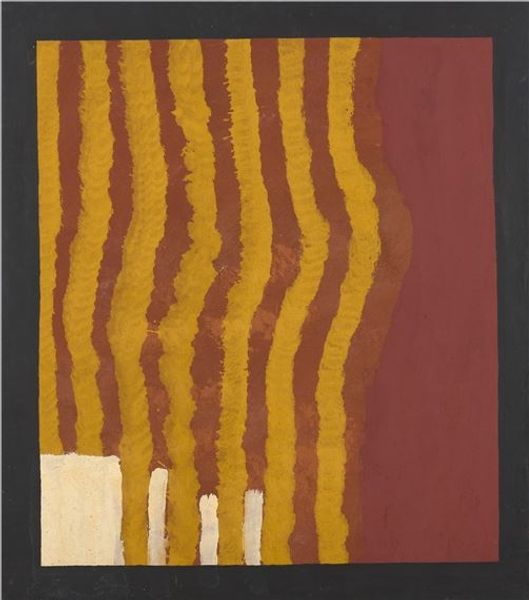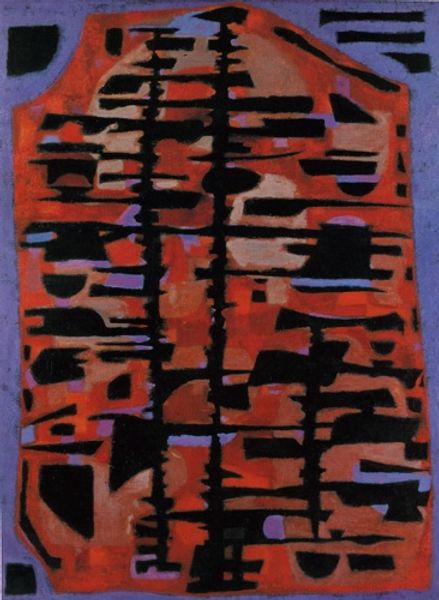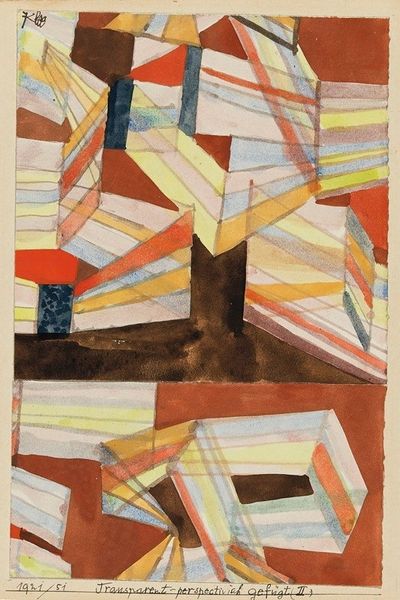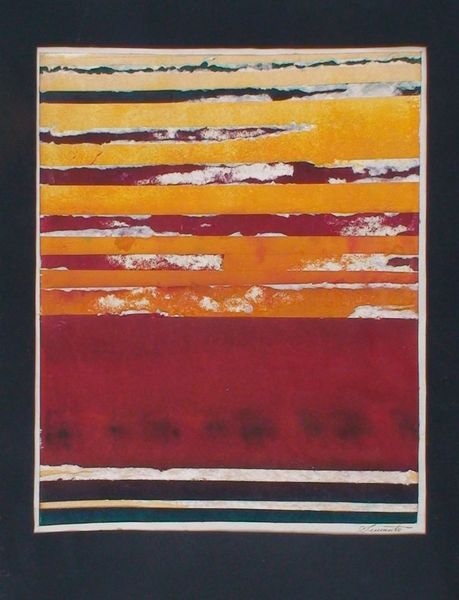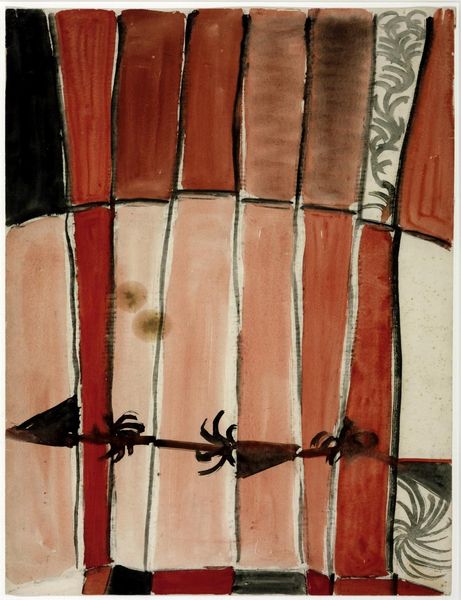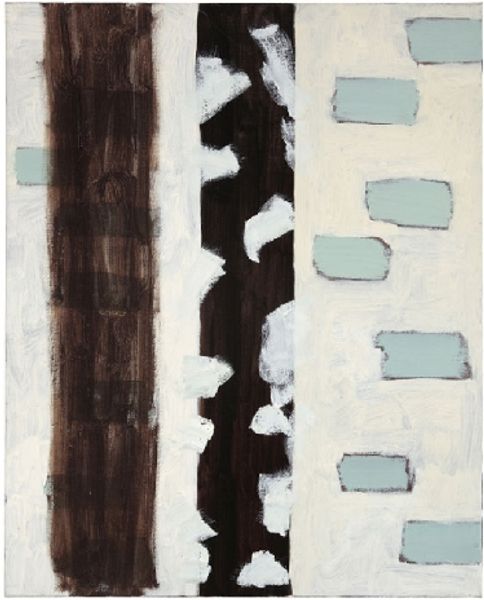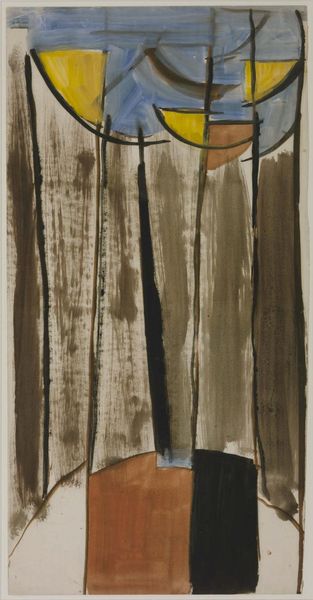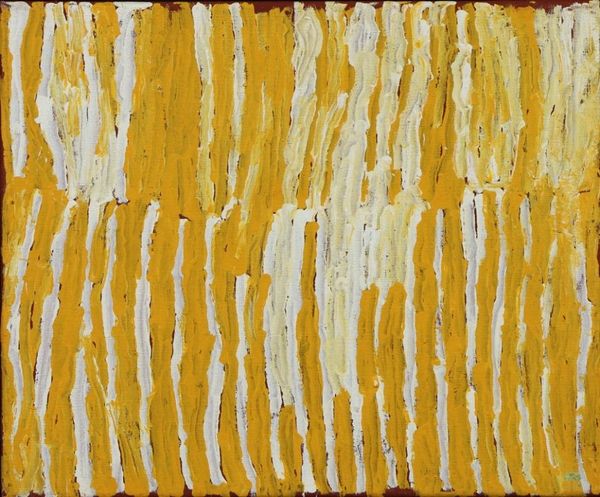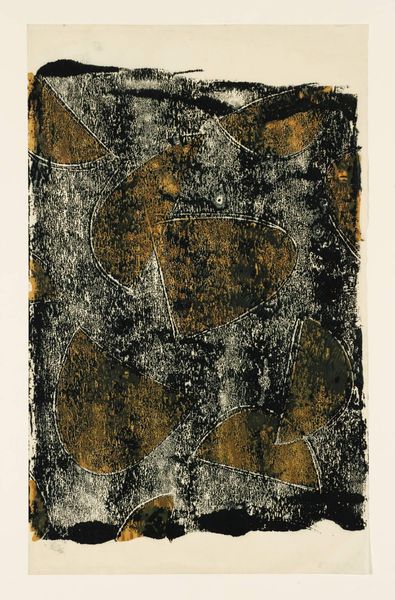
watercolor
abstract painting
abstract
watercolor
geometric
expressionism
line
watercolor
Copyright: Public Domain: Artvee
Curator: Schiele created "Ornament mit parallelen Linien"—Ornament with Parallel Lines—in 1918, rendering the composition in watercolor. It's immediately striking how stark and constrained the visual language feels. Editor: It does evoke a sense of restriction. It looks to me like some sort of primitive flag or even… bars of a jail cell, crudely painted. Is there something oppressive at play here? Curator: Well, it was created during a time of great upheaval, at the tail end of the First World War. The rigid geometry and earthy tones could easily symbolize societal constraints and the somber mood of the era. The lines—the ornament itself—recalls a pattern, yes, but it’s fractured, not perfect. Editor: Exactly! There’s a visible tear or seam across the middle. And that one vibrant, almost out-of-place blue splotch pulls the eye, contrasting the browns and reds and adding a layer of tension or… maybe it's an accent that is almost ironic? A revolt? Schiele often depicted the body under duress and social scrutiny. Is he carrying that over into abstraction? Curator: I believe you are right about it representing more than mere geometric exploration. Schiele was deeply invested in how lines could represent emotion and psychological states. Notice how these watercolor washes create uneven, fluctuating boundaries—how his expressionist sensibility is able to take geometric components but allow the personality to flourish beyond rigidity. I feel that this abstract approach became very useful for the expressionist painters interested in stripping away representation for more emotional and internalized truth. Editor: I see your point. And to consider Schiele's legacy of raw emotion... perhaps it represents his own struggle against conformity. It almost demands to be disrupted, interrogated. It resists resolution. Curator: An apt summation. The work offers a controlled surface appearance in watercolor while housing immense undertones within the period, context, and symbolic application of linear marks and personal iconography. Editor: So, is it a lament or a symbol of resilience? Maybe the beauty lies precisely in that irresolvable question.
Comments
No comments
Be the first to comment and join the conversation on the ultimate creative platform.
